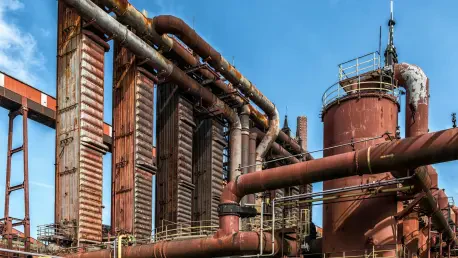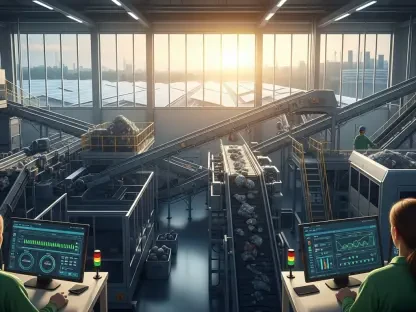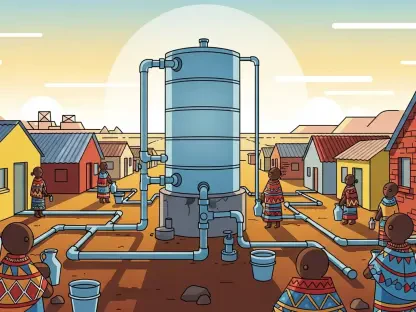In the heart of Matewan, West Virginia, a small yet profoundly significant institution stands as a beacon for one of the most pivotal, yet often overlooked, chapters of American labor history. The West Virginia Mine Wars Museum is dedicated to preserving the raw and inspiring story of the West Virginia Mine War of 1920-21, a time when coal miners, pushed to their limits by grueling conditions and ruthless corporate exploitation, united in a staggering uprising that challenged the very foundations of power. Their fight, marked by bloodshed and unyielding determination, serves as a timeless testament to the strength of collective action. Beyond mere preservation, the museum confronts the deliberate omission of such narratives from mainstream education, striving to educate visitors on the sacrifices made for labor rights that many take for granted today. This article explores the museum’s vital mission, the historic events it commemorates, and the enduring relevance of these struggles in shaping both past and present battles for justice.
Unveiling the Strength of Solidarity
The narrative at the core of the Mine Wars Museum revolves around the monumental Battle of Blair Mountain in 1921, a defining clash during the West Virginia Mine War that stands as one of the largest labor uprisings in U.S. history. Up to 15,000 coal miners, driven by desperation over meager wages, hazardous work environments, and systemic abuse, banded together to confront coal company forces and federal troops. Though their rebellion was ultimately suppressed, the sheer scale of their unified effort captured national attention, exposing the dire plight of workers and paving the way for future reforms, including critical New Deal labor protections in the 1930s. The museum meticulously captures this moment, illustrating how the miners’ collective resolve became a catalyst for change, even in the face of overwhelming odds. Their story underscores a fundamental truth: when workers stand as one, their voice can reverberate far beyond the hollows of West Virginia, influencing policies and perceptions on a national scale.
Another striking element highlighted by the museum is the symbolic unity of the miners, often referred to as the “redneck army” due to the red bandanas they wore as a sign of solidarity. This diverse coalition, comprising white, African American, and immigrant workers, transcended racial and cultural divides to form a formidable front against oppression. The museum’s exhibits emphasize how this unity was not merely a tactic but a profound demonstration of shared humanity and purpose, challenging the divisive tactics often employed by powerful interests to weaken labor movements. By showcasing this cross-cultural alliance, the museum offers a powerful reminder that collective action can bridge even the deepest societal gaps, creating a force capable of confronting entrenched power structures. This historical example continues to inspire modern movements, proving that solidarity remains a potent tool for those seeking justice and equity in any era.
Facing Brutality Head-On
The path to the Battle of Blair Mountain was steeped in violence, a harsh reality that the Mine Wars Museum presents with unflinching honesty. The Matewan Massacre of 1920, a deadly gunfight between striking miners, local officials, and private security forces that left 10 dead, stands as a grim testament to the extreme measures coal companies employed to maintain control. Similarly, the assassination of Sid Hatfield, a local police chief and staunch defender of the miners, in 1921, further exposed the ruthless determination of corporate powers to quash resistance. These events, coupled with the eventual deployment of U.S. Army regiments to suppress the uprising at Blair Mountain, paint a vivid picture of the brutal opposition miners faced. The museum’s detailed accounts ensure that visitors comprehend the staggering risks these workers took, not just for their own survival, but for the hope of a better future for all laborers.
Beyond documenting the violence, the museum also reveals how these tragic events became a galvanizing force for the miners and their communities. Each loss, from the Matewan casualties to Hatfield’s murder, transformed personal grief into a collective call for justice, fueling the resolve to continue the fight despite the odds. Exhibits at the museum capture this turning point, showing how the miners’ spirit was not broken by brutality but rather strengthened, as they rallied together with renewed determination. This resilience in the face of bloodshed offers a poignant lesson about the human capacity to endure and resist, even when confronted with overwhelming force. By presenting these stories, the museum ensures that the true cost of labor struggles is neither forgotten nor sanitized, honoring the courage it took to stand against such violent suppression and inspiring reflection on the sacrifices behind today’s workplace protections.
Restoring a Silenced Past
One of the most critical missions of the Mine Wars Museum is to combat the intentional suppression of labor history from public awareness, a concern passionately articulated by Executive Director Mackenzie New-Walker. Far too often, the stories of worker resistance, including the miners’ march and other pivotal events, are absent from school curricula, leaving generations unaware of the battles fought for basic rights like fair wages and safe working conditions. This omission, sometimes a result of deliberate political actions—such as censorship by state officials during the Depression era—diminishes workers’ understanding of their own historical agency. The museum steps into this void, offering educational programs and exhibits that illuminate these hidden narratives, empowering visitors to see themselves as part of a long lineage of struggle and triumph, and equipping them with the knowledge to navigate modern workplace challenges.
The personal connection of New-Walker, whose family roots trace back to union mining, adds a deeply human dimension to the museum’s efforts to reclaim this history. This perspective underscores the emotional weight of preserving these stories, not just as historical records, but as sources of pride and identity for Appalachian communities often stereotyped as mere subjects of industrial extraction. The museum’s work challenges such narrow portrayals by highlighting West Virginia’s pivotal role in shaping the American labor movement at its peak. By restoring these narratives to public consciousness, the institution fosters a sense of empowerment, encouraging both locals and visitors to recognize the strength embedded in their heritage. This act of reclamation is more than preservation; it is a deliberate effort to inspire current and future generations to value and defend the hard-won rights that stem from past sacrifices.
Bridging History with Modern Challenges
The relevance of the Mine Wars Museum extends far beyond commemorating past events, as it draws compelling parallels between historical labor struggles and today’s pressing issues. Modern health crises, such as the resurgence of black lung disease among miners due to deeper mining practices and reduced federal oversight, echo the dangerous conditions faced a century ago. Similarly, environmental disasters like the 2023 Norfolk Southern train derailment in Ohio reveal ongoing corporate negligence, prompting diverse groups—union members, environmentalists, and affected residents—to unite in resistance. The museum’s exhibits and discussions frame these contemporary challenges as part of a continuous thread of labor struggles, emphasizing that the fight for worker safety and accountability remains as urgent now as it was during the Mine War, urging society to learn from history rather than repeat its mistakes.
A flagship initiative, “Courage in the Hollers,” further solidifies this connection by physically marking the 50-mile route of the 1921 miners’ march with monuments and markers, supported by grants from notable foundations. This project does more than honor the past; it seeks to ignite public dialogue about West Virginia’s identity as a cornerstone of the American labor movement, challenging reductive views of the region as merely a resource hub. By linking the miners’ historic resistance to current calls for justice, the museum encourages today’s workers, activists, and communities to draw inspiration from the red bandanas of yesteryear and form alliances against systemic abuses. This initiative stands as a powerful reminder that the lessons from Matewan and Blair Mountain are not relics but living guides, urging collective action to address modern injustices with the same courage that defined those early 20th-century struggles.
Reflecting on a Legacy of Resilience
Looking back, the Mine Wars Museum serves as a vital keeper of memory, ensuring that the West Virginia Mine War of 1920-21 is not lost to the shadows of history. Its exhibits capture the raw intensity of the miners’ fight against exploitation, from the violent confrontations at Matewan to the epic standoff at Blair Mountain, while shedding light on the systemic efforts to erase such stories from public knowledge. Through personal accounts and historical records, the museum paints a vivid picture of a time when collective action, though met with brutal resistance, planted seeds for labor reforms that reshaped the nation. Its dedication to education goes beyond mere storytelling, fostering a deeper understanding of the sacrifices behind everyday workplace rights.
Moving forward, the museum’s initiatives like “Courage in the Hollers” offer a tangible way to engage with this legacy, inviting communities to reflect on their shared history and draw strength from it. As modern challenges like health crises and corporate overreach persist, the museum’s work stands as a call to action, encouraging the formation of new coalitions inspired by the miners’ unity. By preserving and promoting these lessons, the institution ensures that the spirit of solidarity continues to guide future efforts toward justice, urging society to honor past struggles by actively safeguarding and expanding the protections they secured.









